A Practical Guide to Joint Health for Hobbyists and Athletes.
TL;DR - Don't wait until problems develop, start working on it now.
🔑Key Points
Joint health is way more important than you think. If your joints fail, you will potentially compromise your ability to move, exercise, and fully pursue your goals.
Your joints will fail due to either.
An acute processes (typically injury/accident), or
A chronic process (typically degenerative disease/inflammation)
There are things you can do to reduce (never completely eliminate) the risk of both.
You may want to approach joint health like saving for retirement: don’t wait, start early, and do a little bit each day.
Mobility training is underrated. Schedule a mobility training session on your weekly calendar. You’ll thank me later.
Padding your joints with strong muscles and tendons provides additional support and goes a long, LONG way. Go hit the gym and do some strength and hypertrophy training.
Tap early and tap often.
If you already have one or more compromised joints, seek medical attention with the objective of developing a long-term game plan.
I will discuss stem cell treatments on a separate post.
As with most things, nutrition acts synergistically with supplementation and exercise to prevent problems BEFORE they happen:
📰This Issue
In this post I’ll go over the reasons joint health is more important than you think, we’ll review the most common joint failure mechanisms and issues, and we’ll discuss a couple of useful habits you can develop to extend the life of your joints. I also have some extra resources for you in case some of your joints already need a tune up- which we both know they do.
🦴Joint Health is More Important Than You Think
Joint health is way more important than you think. If your joints fail, you will be in pain, progressively deteriorate, and will potentially compromise your ability to move, exercise, pursue your goals, and depending on the type and extent of the underlying issue, to live independently.
Of note, exercise is by far the most effective and significant intervention anyone can implement to improve their health. Nothing comes close. (For more info on this wild claim click here). Hence, losing the ability to exercise will for sure result in consequences that can and will affect the rest of your health: obesity, diabetes, metabolic syndrome, cardiovascular disease, depression & anxiety, cancer, etc. The ramifications go on and on.
To complicate things further, joint problems can oftentimes be insidiously sneaky: A minor problem that gets ignored tends to compound over time and get more serious - I’m sure there is a metaphor for real life somewhere in there. Anyway, when joints begin to fail or experience significant problems - particularly in the lower limbs, hips, back, shoulders, or neck, the initial issue can not only get worse itself, but can also lead to compensatory mechanisms that indirectly and progressively impact the contralateral (opposite) side of the body.
This compensation can lead to changes in movement patterns, posture, pressure, and weight distribution. For instance, if one of you joints - lets say your hip or your knee, is affected by arthritis or injury (like my left knee after ACL reconstruction 20 yrs ago), you might unconsciously alter your gait or posture to relieve the pain or discomfort. This can result in an increased load on the contralateral side or other adjacent joints as you compensate to support the body's weight or adjust the way movement is distributed. Over time, with every single step you take each day, this altered biomechanical stress on the contralateral side will lead to additional wear and tear on those additional joints.
If sustained over an extended period, this altered biomechanical stress might in turn increase the risk of injury or permanent degenerative damages to those joints. Hence, it is crucial to not only address joint issues promptly to minimize the need for compensatory mechanisms, but also to have a pretty solid strength and mobility training regimen in place that hits the entire body and keeps it as symmetrical as possible.
If you live in the Pittsburgh region you should look into scheduling mobility training sessions with my friends:
Jesse Novak: Deepest-root
Tyler Butler: Insta
Here is the difference mobility training can make. Check out my friend Jack after we did just one month of mobility training to correct some stability/strength deficits derived from training on his left shoulder:
Good rule of thumb: In general, you should load every single joint in your body during exercise. Take each joint through its entire range of motion at least once a week. You can do this as part of a single workout, or as part of a split program. If you happen to train BJJ or any other type of submission grappling sport, we will gladly take your joints through their entire range of motion for you - mostly against your will, just don’t forget to tap early and tap often. If on the other hand, you don’t train, I’m not entirely sure what you are doing with your life.
If you want to give BJJ a try you should stop by the gym at StoutPGH. Trust me, it will change your life:
Types of Joints
For reference, here are different types of joints:
Hinge Joints: These joints allow movement in one plane, like the elbow and knee.
Pivot Joints: These joints allow for rotational movement, such as the joint between the radius and ulna in the forearm.
Ball-and-Socket Joints: These joints permit a wide range of motion in multiple directions, as seen in the shoulder and hip joints.
Condyloid (Ellipsoidal) Joints: These joints allow movement in two planes, similar to the knuckles in the fingers.
Saddle Joints: These joints enable movement in two planes but with limited rotation, as found in the thumb.
Gliding (Plane) Joints: These joints allow sliding or gliding movements between bones, such as in the wrist and ankle.
🩼How Joints Fail
As you probably know by now, joints are complex structures composed of various tissues: bone, cartilage, ligaments, tendons, muscle, fascia, vessels, nerves, and connective tissue - and in some cases, synovial fluid (not a tissue). That is a lot of stuff that can fail! And as you can imagine, all these moving parts evolved to interact in a delicate balance allowing for fluid and pain-free movement.
The complex interaction between these components ensures stability, strength, and flexibility: Cartilage acts as a cushion between bones - reducing friction and facilitating smooth motion, ligaments and tendons provide support and attachment points, muscles generate movement, vessels are supply lines, nerves carry commands, etc. All these components work in fine harmony within joint structures allowing our bodies to move and function optimally.
Not surprisingly, damage to any and/or all of these structures can result in different types of joint damage with different degrees of compromise. These damages not only manifests in a variety of ways, but more importantly, require different types of treatment.
Generally speaking, your joints will fail due to either:
An acute processes (injury/accident), or
Chronic processes (typically degenerative disease induced by inflammation).
💥Acute Processes:
Rather than providing and exhaustive list of all injury possibilities and their corresponding treatment - this would be impossible to cover in a single post, we’ll cover some basic principles:
The most important thing to keep in mind here is that the attention given to and the treatment of an injured joint should be escalated accordingly to the magnitude of the damage - and since in most cases you lack the ability to diagnose yourself, you should seek medical attention whenever in doubt.
Here is a little cheat sheet so you can sound like a cultured individual whenever you describe your injuries to your friends: Bones break, joints dislocate, ligaments sprain, tendons strain, and cartilages tear.
A quick guide on sprains and strains:
Grade 1 (Mild): Involves minor stretching or microscopic tearing of the tendon or muscle. There might be slight pain, tenderness, and minimal swelling.
Grade 2 (Moderate): Involves partial tearing of the tendon or muscle. This can cause moderate pain, tenderness, swelling, and difficulty using the affected muscle or joint.
Grade 3 (Severe): Involves a complete tear or rupture of the tendon or muscle. This leads to significant pain, swelling, bruising, and a loss of function in the affected area.
And here is a very general oversimplification to go along with the cheat sheet (if you are a physician, earmuffs): CT Scans and X-rays are for bones, and MRIs are for soft tissues.
For example, here is an Xray of my friend Tim who dislocated his toe in open mat last week. Before and after reduction. Notice how you can only see bones and no soft-tissue on an Xray:
BTW, you wanna fix dislocations as quick as possible because the longer you wait the more problematic they become.
On the other hand, here is an MRI. Notice how it shows soft tissues: Muscle, ligaments, tendons, etc:
🤕Chronic Processes:
Osteoarthritis (OA): Osteoarthritis is a degenerative joint disease characterized by the breakdown of cartilage in the joints. It can start as early as 40 and it can affect any joint - but it is most commonly found in the knees, hips, hands, and spine. Osteoarthritis is one of the leading causes of disability, and an ageing population and increasing obesity rates are likely to compound this issue. Osteoarthritis affects 7% of the global population. Data available: Here
Comprehensive report on Osteoarthritis: Here
Rheumatoid Arthritis vs. Osteoarthritis Joint Pain
Rheumatoid Arthritis (RA): Rheumatoid arthritis is an autoimmune disorder that often starts in the small joints of the hands and feet and can lead to joint deformities if not managed effectively. Patients with RA may develop adverse long-term outcomes such as physical and work disability, reduced quality of life, and increased mortality. Work disability is a major consequence of RA. The indirect cost of RA due to lost workability has been estimated to be nearly three times greater than treating the disease. Rheumatoid Arthritis affects around 1% of the world population. Report and data available: Here
Gout: Gout is the most prevalent inflammatory arthritis in men. Gout is a type of debilitating arthritis caused by the deposition of urate crystals in the joints, leading to inflammation and pain. Report and data available: Here
Osteoporosis: Osteoporosis is a common and potentially debilitating bone disorder characterized by the weakening of bone tissue, leading to increased fragility and a higher risk of fractures, especially in the hip, spine, and wrist. This condition often develops silently, with no symptoms until a fracture occurs, earning it the nickname "the silent disease." While Osteoporosis primarily affects bone density, it can lead to fractures, including those of the joints.
Bursitis and Tendinitis: These conditions involve inflammation of the bursae (small fluid-filled sacs that cushion joints) and tendons, respectively. They can cause joint pain and restricted movement.
🙅🏽♂️Here is a List of Bad Things for Your Joints
Excessive Weight Gain: Carrying excess body weight puts added stress on the joints, especially the knees, hips, and spine. It can lead to the development or exacerbation of joint conditions such as osteoarthritis. Maintaining a healthy weight through diet and exercise can help reduce the strain on your joints.
Inactivity: A sedentary lifestyle can weaken the muscles that support the joints and contribute to joint stiffness and pain. Regular physical activity, including strength training and flexibility exercises, is crucial for joint health.
Overuse and Repetitive Strain: Engaging in repetitive motions or overusing a joint can lead to conditions like tendinitis and bursitis. If your daily activities involve repetitive actions, take breaks, vary your movements, and use proper ergonomics to reduce the risk of overuse injuries.
Smoking and Excessive Alcohol Consumption: Smoking and excessive alcohol consumption can contribute to inflammation and reduce blood flow, which can negatively impact joint health. If you smoke, consider quitting, and if you drink alcohol, do so in moderation.
Poor Posture: Maintaining poor posture, whether while sitting at a desk, using electronic devices, or during other activities, can strain your spine and contribute to back and neck pain. Be mindful of your posture and make ergonomic adjustments to your work and living environments to support a more upright, neutral spine position.
✅Good Habits that Promote Joint Health
🏋🏽♂️Exercise
Maintaining joint health through exercise is vital for overall mobility and well-being. Incorporating a diverse range of exercises and movements can significantly support joint function, reduce the risk of injury, and enhance flexibility. Initiating a comprehensive joint health routine involves various components:
Full Range of Motion Exercises: Ensure each joint moves through its complete range regularly. This practice helps in preserving joint flexibility, minimizing stiffness, and supporting lubrication within the joint, promoting better functionality and reducing the risk of joint-related issues.
Mobility Training Sessions: Schedule sessions focused on joint mobility exercises. These can include dynamic stretches, gentle movements, and exercises targeting joint-specific mobility.
Strength and Hypertrophy Training: Incorporate resistance training to strengthen the muscles around the joints. Strong muscles offer better support to the joints, reducing stress on them during daily activities or physical exertion. This supports joint stability and helps in managing and preventing joint discomfort.
Yoga and Flexibility Work: Yoga practices, along with other flexibility-enhancing exercises, offer benefits such as improved joint flexibility, balance, and posture. These exercises can relieve tension in the muscles around the joints, enhancing joint mobility, and fostering relaxation.
Stretching Exercises: Always stretch after a workout or sauna session once you are already warm. Including regular stretching in the routine can improve joint flexibility and muscle elasticity. Stretching helps reduce muscle tension, enhances blood flow, and supports a wider range of motion in the joints.
🍲Diet and Inflammation
Avoid pro-inflammatory foods: Foods that are typically considered highly pro-inflammatory include processed foods high in refined sugars and carbohydrates, fried foods, red and processed meats, sugary beverages, margarine, and foods high in trans fats.
Get enough protein to support muscle: Protein not only helps with strength training by providing the building blocks for muscle growth, but it also helps by supporting injury repair mechanisms, and recovery from training.
Extra virgin olive oil: Olive oil contains compounds such as oleocanthal, which exhibits anti-inflammatory properties that may potentially benefit joint health. The monounsaturated fats in olive oil could contribute to reducing inflammation, thus potentially alleviating symptoms related to joint conditions. However, while it might offer some benefits, more research is needed to conclusively determine its direct impact on joint health.
Mediterranean diet: The diet's emphasis on anti-inflammatory foods, particularly rich in omega-3 fatty acids and antioxidants, has been associated with reduced inflammation, potentially benefiting joint conditions such as arthritis. However, while some studies show positive correlations between the Mediterranean diet and improved joint health, more extensive and specific research is necessary to conclusively establish its direct impact on joint-related conditions. Source: here
Bell peppers: Bell peppers, especially the brightly colored ones like red, yellow, and orange, are rich in antioxidants, particularly vitamin C and beta-carotene. These antioxidants can help in reducing inflammation and fighting oxidative stress, potentially supporting joint health. Additionally, the presence of certain anti-inflammatory nutrients in bell peppers like quercetin and lutein might contribute to easing joint-related discomfort or swelling.
Fish: Fish, particularly those rich in omega-3 fatty acids like salmon, mackerel, and sardines, are known for their potential to benefit joint health. Omega-3s possess anti-inflammatory properties that may alleviate joint pain and stiffness. Regular consumption of fish is often linked to reduced inflammation, potentially contributing to improved joint mobility and comfort.
Garlic: Garlic is renowned for its potential anti-inflammatory and antioxidant properties. Its active compound, allicin, may aid in reducing inflammation, potentially benefiting joint health (Fyi for the allicin in garlic you want to crush the garlic and wait 10 minutes before heating it. Takes a while to form and is heat stable once it does). Additionally, garlic's sulfur-containing compounds have been suggested to support the body's natural defenses against oxidative stress, which could indirectly contribute to joint health by reducing inflammation and protecting cells from damage.
💊Supplements
Collagen: Collagen supplements support joint health by promoting the repair of cartilage and connective tissues. Source: here.
Glucosamine: Often taken in the form of glucosamine sulfate or glucosamine hydrochloride, it is a building block for cartilage and may help reduce joint pain and improve joint function. Source: here
Chondroitin: Chondroitin sulfate is often taken in combination with glucosamin. It may help protect and repair joint cartilage. Source: here.
Turmeric: Studies suggest that the anti-inflammatory nature of curcumin may help alleviate symptoms associated with joint conditions such as arthritis by reducing inflammation and providing relief from joint pain and stiffness. Source here.
Fish Oil (Omega-3 Fatty Acids): Omega-3 fatty acids, found in fish oil, have anti-inflammatory effects that can benefit joint health. Source: here
MSM (Methylsulfonylmethane): MSM is a sulfur-containing compound that is believed to reduce joint inflammation and improve flexibility. Source: here
Vitamin D: Adequate levels of vitamin D are essential for overall bone and joint health. Source: here and here
Calcium: Calcium is important for maintaining strong bones, which can support joint health. Source: here
Vitamin C: Vitamin C is an antioxidant that plays a role in inflammation and collagen formation, both of which are crucial for joint and connective tissue health. Source: here
👨🏽⚕️Treatment for Existing Issues
Go see your doctor. Your PCP is the place to start.
The most important thing when talking to a doctor about your joint health is to come up with a plan to manage your joint health and mitigate further damage. Depending on the current state of your joints, this will oftentimes require a multidisciplinary effort including PCPs, Orthopedic Surgeons, Sports Medicine Docs, Physical Therapists, and more importantly: You. You are the one flying this plane, chief. You are in charge of your own health, not your doctor. The sooner you realize this and start acting like it, the better.
🧴Topical Agents
This thing works like magic and you can get it over the counter. Not only does it alleviate pain but it also decreases inflammation, meaning that it addresses the cause of some joint issues, not just the symptom (pain). I carry it in my bag and you should do the same.
🔥Heat/Cold Therapy❄️
Heat/Cold Therapy is a great way to alleviate joint pain. You can use an icepack during the inflammatory phase at the site of injury, and a heat pack during the healing phase. You can read my post on this topic here.
🔥Sauna
The use of sauna regularly is also a great way to induce tissue repair, muscle growth, and faster recovery in general. You can read my post on sauna here.
❄️Ice bath
This practice offers many health benefits including reduced inflammation. Ice baths have been shown to be particularly effective for athletes and individuals engaged in intense physical activity. The cold immersion helps in the recovery process by minimizing muscle soreness, preventing or reducing muscle damage, and accelerating the repair of microtears in the muscle tissue. If you live in the Pittsburgh region and want to give ice baths a try you should like into my friends over at Pittsburgh Tub Club.
📋Your To-Do List:
Listen to this episode on Knee anatomy, pain, & treatment from Peter Attia & Adam Cohen:
Listen to this episode on Hip anatomy, pain, & treatment | Peter Attia & Adam Cohen:
This post will be living document I will continue to update with more supplements and dietary choices as new information comes out.
🎗️Additional Resources
Dehlin M, Jacobsson L, Roddy E. Global epidemiology of gout: prevalence, incidence, treatment patterns and risk factors. Nat Rev Rheumatol. 2020 Jul;16(7):380-390. doi: 10.1038/s41584-020-0441-1. Epub 2020 Jun 15. PMID: 32541923.
Schönenberger KA, Schüpfer AC, Gloy VL, Hasler P, Stanga Z, Kaegi-Braun N, Reber E. Effect of Anti-Inflammatory Diets on Pain in Rheumatoid Arthritis: A Systematic Review and Meta-Analysis. Nutrients. 2021 Nov 24;13(12):4221. doi: 10.3390/nu13124221. PMID: 34959772; PMCID: PMC8706441.
Lucas L, Russell A, Keast R. Molecular mechanisms of inflammation. Anti-inflammatory benefits of virgin olive oil and the phenolic compound oleocanthal. Curr Pharm Des. 2011;17(8):754-68. doi: 10.2174/138161211795428911. PMID: 21443487
Czajka A, Kania EM, Genovese L, Corbo A, Merone G, Luci C, Sibilla S. Daily oral supplementation with collagen peptides combined with vitamins and other bioactive compounds improves skin elasticity and has a beneficial effect on joint and general wellbeing. Nutr Res. 2018 Sep;57:97-108. doi: 10.1016/j.nutres.2018.06.001. Epub 2018 Jun 9. PMID: 30122200.
Morita M, Yamada K, Date H, Hayakawa K, Sakurai H, Yamada H. Efficacy of Chondroitin Sulfate for Painful Knee Osteoarthritis: A One-Year, Randomized, Double-Blind, Multicenter Clinical Study in Japan. Biol Pharm Bull. 2018 Feb 1;41(2):163-171. doi: 10.1248/bpb.b17-00556. Epub 2017 Nov 27. PMID: 29176264.
Toguchi A, Noguchi N, Kanno T, Yamada A. Methylsulfonylmethane Improves Knee Quality of Life in Participants with Mild Knee Pain: A Randomized, Double-Blind, Placebo-Controlled Trial. Nutrients. 2023 Jun 30;15(13):2995. doi: 10.3390/nu15132995. PMID: 37447322; PMCID: PMC10346176.
Disclaimer: This content is provided for educational purposes only and should not be construed as medical advice. Always consult with your primary care physician (PCP) or a qualified healthcare professional before making any changes to your lifestyle, diet, or exercise routine. The information presented in this article is not intended to diagnose, treat, cure, or prevent any disease. Individual results may vary. The author and publisher of this article are not responsible for any adverse effects or consequences resulting from the use or application of the information provided. Please use your own discretion and judgment when implementing any suggestions or recommendations.





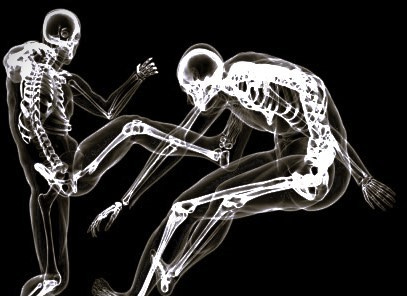


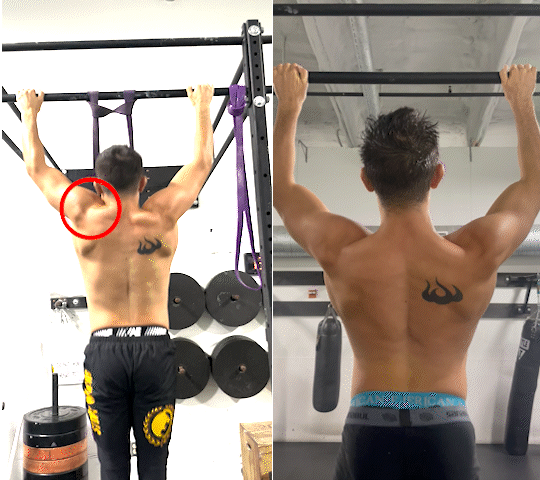






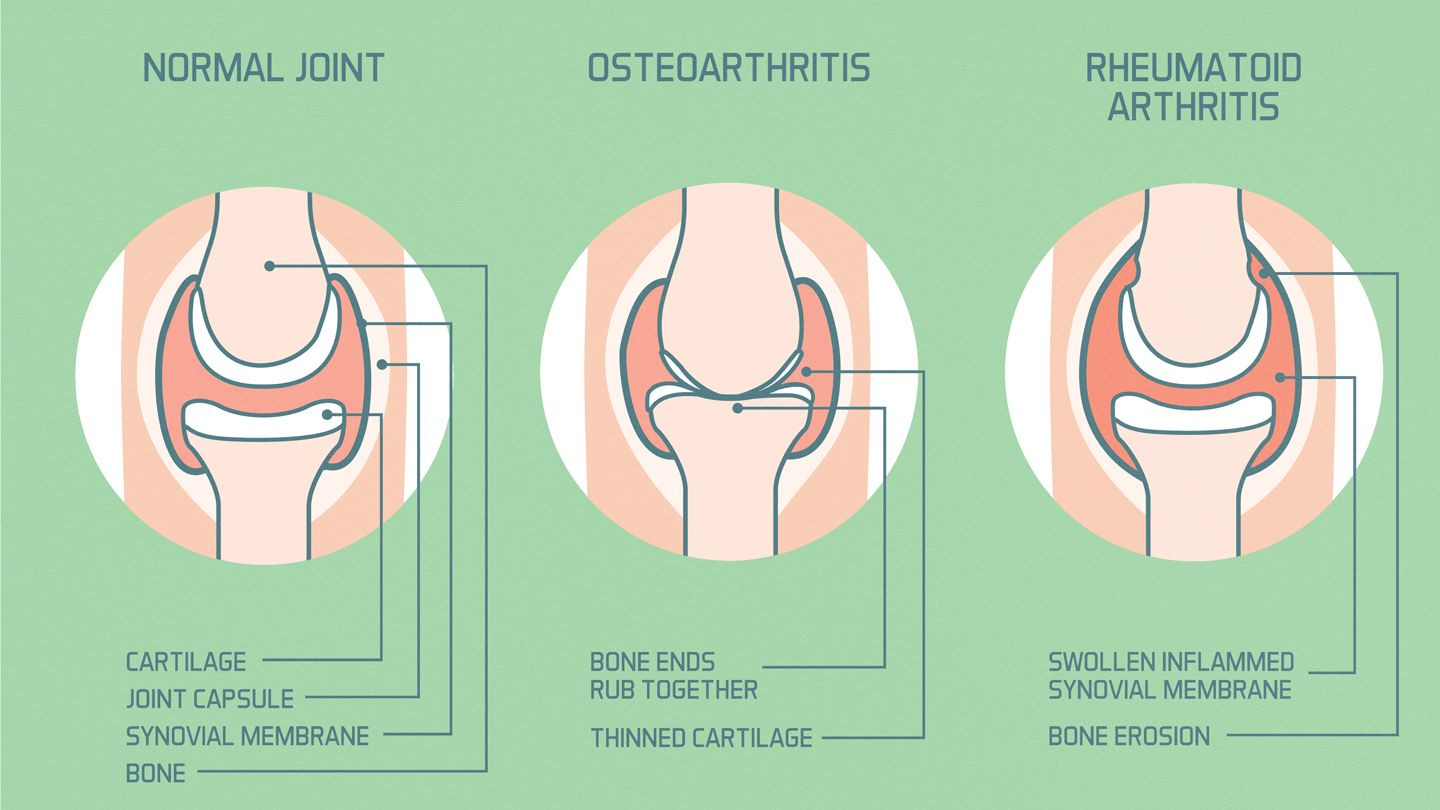
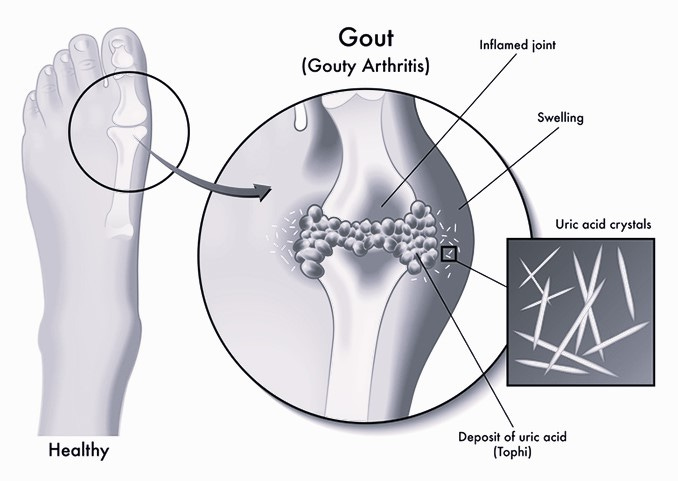
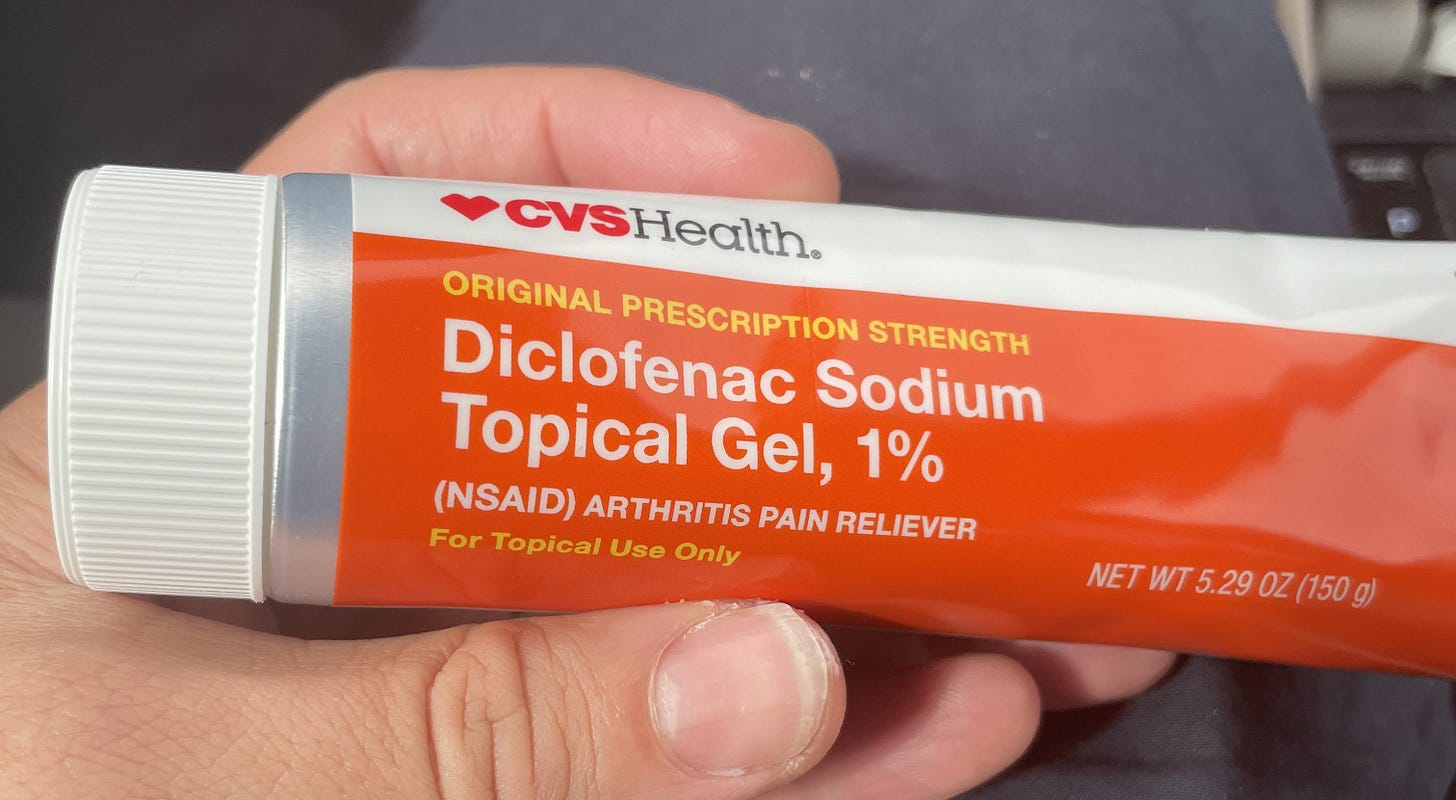





Get this promoted on the gym's social media accounts. Everyone can benefit from this information.
That being said, I've been trying to get more range of motion even just being at my desk to help prevent my hip and lower back from injury from prolonged sitting. How? A sit-stand desk good, but even better is working/balancing on one leg and trying other positions to get full range of motion and work on stability: with a chair you can get forward lunges during a meeting, open up the groin or get a type of Cossack squat if you put the chair to the side etc... Furthermore, i've even seen balance boards in my company's san francisco offices to use while you work.
Thanks for the article, it complements a lot of what i'm trying to improve on since herniating disks in my back - which I am unsure what you would categorize those joints as.